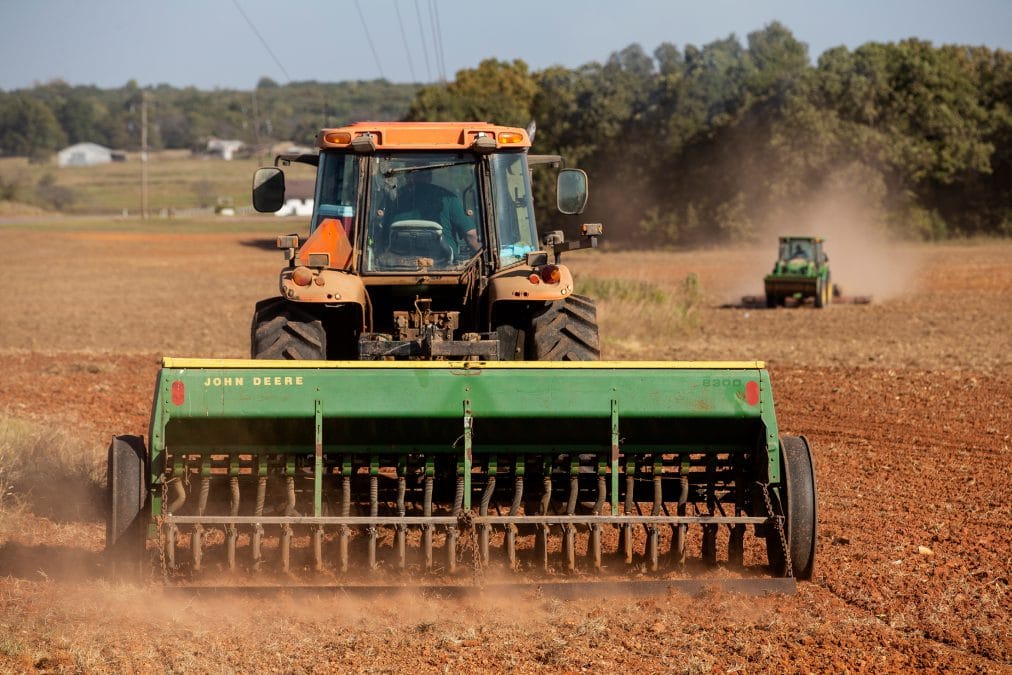After experimenting with planting a mixture of cover crops on Citizen Potawatomi Nation-owned land in recent years, the Tribe has experienced financial and environmental gains. Because of this, the CPN Department of Realty that oversees the Nation’s agricultural endeavors recently expanded this practice to an additional 150 Tribally-owned acres.
“The main reason that we’re doing it is to improve soil health. We have some properties that just aren’t very healthy soil-wise and organic matter-wise,” said Tonya Kitchen, CPN agriculture programs manager.

Environmental benefits
According to Oklahoma Cooperative Extension Service and Oklahoma State University, cover crops reduce soil erosion and runoff, decrease evaporation so that plants have more water available, and limit the growth of unwanted vegetation while also improving water and soil quality by adding important nutrients required for healthy production.
“The practice includes planting legumes to put nitrogen back in the soil for your next crop to use, and it’s a recurring cycle,” Kitchen explained. “Planting plants with deeper root systems pulls nutrients from the lower levels of the soil back up to the surface so that the next crop can use those.”
Cover crops also reduce carbon emissions caused by disturbing the soil. CPN and its lessees no longer incorporate tillage on the 237 acres of Tribal land that utilizes this practice. In Oklahoma, wind and water runoff erode topsoil, and according to the United States Department of Agriculture, regenerating one inch can take at least 100 years.
“This is a way to speed up that process,” she said.
Utilizing regenerative agriculture techniques is also an extension of CPN’s traditions of land stewardship.
“Basically, we’re planting crops now to add beneficial health matter for years to come, and this is a constantly reoccurring process,” Kitchen said.
Diversifying economic portfolio
Traditional methods include planting one to two cash crops per year, but CPN benefits economically from the year-round production provided through cover crops. Instead of harvesting and planting cash crops at the same time as producers across the region, CPN has taken advantage of the ability to harvest early and late in the seasons, and in return, sell when prices are higher.
“If you hit the middle market, a lot of times, your price will be lower because there’s a market flood,” Kitchen said.
On land CPN leases to local farmers, the Tribe receives one-third of the profit. When these farmers can produce cash crops year round, this increases the return on investment for CPN. As the Nation continues expanding economic opportunities outside of gaming, incorporating regenerative agriculture has proven advantageous.
“The more benefit we can provide to the environment through carbon reduction and through soil health improvement, we would like to see it on as many properties as possible, and there is the added benefit of year-round income,” Kitchen said. “It expands our enterprise to a year-round income base as opposed to just cutting hay in the summer to get our money.”
Learn more about CPN’s agriculture endeavors at cpn.news/dres.
